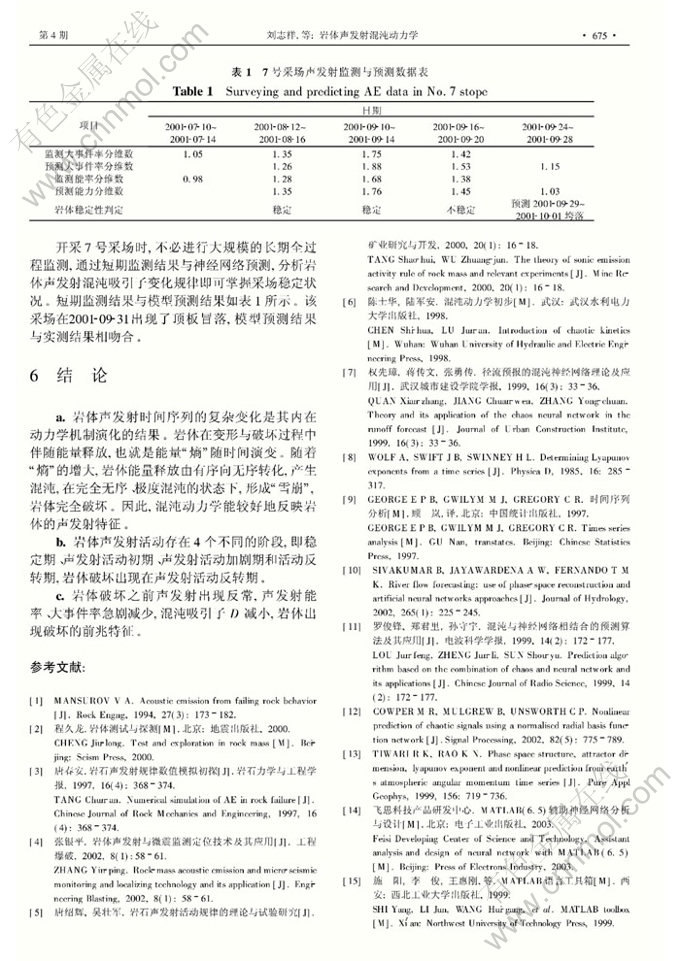岩体声发射混沌动力学
来源期刊:中南大学学报(自然科学版)2004年第4期
论文作者:刘志祥 李夕兵
文章页码:671 - 675
关键词:岩体声发射;混沌动力学;神经网络
Key words:acoustic emission in rock mass; chaotic kinetics; neural network
摘 要:采用混沌动力学研究了岩体声发射活动规律,并提出了岩体声发射时间序列确定性检验方法;计算了在岩体变形与破坏过程中不同阶段声发射混沌吸引子,分析了各阶段混沌吸引子变化规律;将混沌与神经网络相结合,建立了岩体声发射预测模型。此外,对工程岩体声发射进行监测,对测量数据进行了自适应滤波去噪处理。研究结果表明:工程岩体声发射活动存在4个不同的阶段:声发射稳定期,声发射活动初期,声发射活动加剧期和活动反转期。岩体破坏出现在声发射活动反转期,在此阶段声发射出现反常,混沌吸引子D减小;混沌动力学能反映岩体的声发射活动特征,所建立的模型能预测和分析工程岩体稳定性。
Abstract: Active characteristics of acoustic emission(AE) in rock mass were studied based on chaotic kinetics, and a method was put forward to verify deterministic character to time series of AE. The chaotic attractors of AE in different stages were calculated during the deformation and breakage of rock mass, and the change laws of chaotic attractors were analyzed in different stages. By coupling chaos with neural network, a prediction model of AE in rock mass was established. AE in rock engineering was monitored, and noises were removed from measured data with adaptive filter. The results show that there are four different stages in AE activities, i.e., stable period, earlier active period, intensely active period and reversal period. Breakage of rock mass occurs in the reversal period when abnormal AE appears and the value of chaotic attractor diminishes. The chaotic kinetics is suitable to study AE characteristics, the proposed prediction model can be used to predict and analyse the stability in rock engineering.




